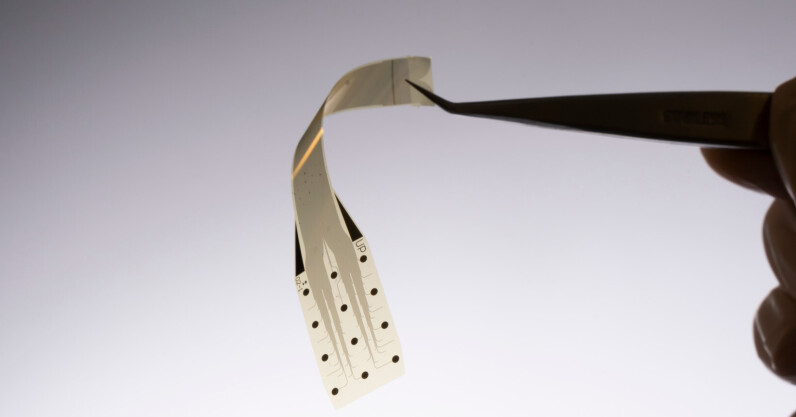
Elon Musk has outlandish plans for Neuralink’s brain-computer interfaces, from giving people “superpowers” to downloading their memories. Spanish rival Inbrain Neuroelectronics has a simpler goal: improving our health — and nothing more.
“I know Elon Musk might want to use Neuralink to drive a Tesla or something like that, but we will never go beyond therapeutic applications,” Carolina Aguilar, Inbrain’s CEO and co-founder, told TNW.
While Musk has captured headlines with futuristic ambitions for human enhancement, Inbrain has been steadily focused on developing its neural interfaces to treat neurological diseases. The company’s tech also stands apart. It’s built on the “wonder material” graphene.
Graphene is an ultra-thin, strong, flexible material that conducts electricity without degrading. It has the potential to be more effective and less invasive than the metals and polymers employed in brain-computer interfaces by companies like Neuralink, Blackrock Neurotech, or Medtronic.
Inbrain’s device is made up of tiny graphene electrodes on a film thinner than a human hair. The implant reads electrical signals from the brain and, when necessary, sends electrical pulses back. It’s designed to treat neurological disorders by targeting the root cause: faulty brain signals.
Inbrain’s first focus is Parkinson’s disease. Its graphene-based implant is designed to detect specific neural signals tied to motor function, then deliver ultra-precise stimulation only when needed. “It won’t cure the disease, but it will cure the symptoms of it,” said Aguilar.
From the lab to the human brain
Last year, Inbrain carried out the world’s first in-human trial of its graphene-based implant at the University of Manchester.
Surgeons temporarily placed the device on a patient’s brain during tumour surgery. In just 79 minutes, it identified healthy and cancerous tissue with micrometre precision. Inbrain now plans to test the device in up to 10 patients to assess graphene’s safety in the brain, as part of the EU’s €1bn Graphene Flagship project.
After that, Inbrain aims to begin clinical trials of its therapeutic implant for Parkinson’s disease, said Aguilar.
That system will combine two components: a thin, cellophane-like sheet that rests on the brain’s surface to read electrical activity, and a second, deeper implant that delivers highly targeted stimulation to areas controlling movement.
“With artificial intelligence, the device can learn from each patient’s brain to deliver personalised neurological therapy,” Aguilar explained.
But that’s just the beginning. Inbrain hopes to use the same closed-loop system to tackle conditions such as epilepsy, dementia, and chronic pain. Ultimately, it could help restore lost functions like speech or movement in patients with neurological damage.
Founded in 2020, Inbrain has raised $100mn to date, according to Aguilar. That includes a $50mn Series B round closed last year and a $4.5mn grant from the Spanish Ministry of Industry and Tourism, announced last week. When asked about the company’s future funding prospects, Aguilar indicated an IPO was an option.
“We want to have the biggest impact as quickly as possible, and if going public is the best route to get there, we’ll take it,” she said.
Aguilar also said that they would be open to being acquired by the “right partner”, but added that she’s not sure if Neuralink would be “a good fit.”
The future of tech is a key theme of TNW Conference, which takes place on June 19-20 in Amsterdam. Tickets for the event are now on sale — use the code TNWXMEDIA2025 at the checkout to get 30%.


